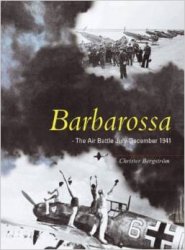We do not have an exact description of Charlemagne from his lifetime, but we
Do have one from his biographer Einhard, who wrote in 826:
His body was large and strong. He was tall, but not unduly so, since his height was seven times the length of his own foot. The top of his head was round, his eyes were large and lively, his nose was a little larger than average, he had fine white hair and a cheerful and attractive face. So, standing or sitting his presence was greatly increased in authority and dignity. His neck seemed short and thick and his stomach seemed to project, but the symmetry of the other parts hid these flaws. His pace was firm and the whole bearing of his body powerful. Indeed his voice was clear but given his size, not as strong as might have been expected. His health was good until four years before he died, when he suffered from constant fevers. Towards the end he would limp on one foot. Even then he trusted his own judgment more than the advice of his doctors, whom he almost hated, since they urged him to stop eating roast meat, which he liked, and to start eating boiled meats. (34)
Einhard’s description matches the images we have of him on the coins of the time as well as the eight-inch (20.3 cm) bronze statue prized by the Louvre Museum in Paris. Charlemagne’s tomb was opened in 1861 by scientists who reconstructed his skeleton and measured it, finding that it was 74.9 inches (190 cm), and a modern study based on the dimensions of his tibia suggest that his height was 72.44 inches (1.84 m). Since the average male was 66.54 inches (1.69 m), he was probably one of the tallest men of his day.
Charlemagne was supposedly stately, with fair hair and a thick neck. The contemporary paintings and sculpture of the man, however, show an ideal vision of him. The Roman tradition of realistic portraits was out of favor at the time, and so pictures of rulers were made with the view of showing them as perfect beings, which more often made them all look alike. Pictures of Charlemagne the Emperor and God’s representative on Earth resemble images of an ideal ruler and often look similar to icons of Christ as Ruler. Even his hair is portrayed incorrectly—Einhard describes Charlemagne as “canitie pulchra” (“with beautiful white hair”), suggesting that the man went prematurely gray, but portraits of him render his hair as blond or yellow.
Einhard describes Charlemagne’s clothes to show how the emperor was an unassuming man—he wore the traditional costume of the Frankish people:
He used to wear his national, that is, Frankish, costume; close to his body he put on a linen shirt and linen underwear, then a tunic fringed with silk and stockings, then he wrapped his thighs and his feet with stockings, and covered his shoulders and chest in winter with a jacket made of otter-skin or ermine and a blue cloak, and he was always armed with his sword, which had a gold or silver hilt and belt. Sometimes he used a jeweled sword, but only at great feast days or when he received foreign ambassadors. He spurned foreign clothes, even the most beautiful, and never wore them except at Rome, when, asked once by Pope Hadrian and then by his successor Leo, he wore a long tunic and a chlamys and put on shoes made in the Roman way. On feast days he would process wearing a robe woven of gold and jeweled leggings and fastened his cloak with a golden brooch, and wore a crown of gold adorned with jewels. But on other days his costume was little different from that of the common people. (35)
Judging from Einhard’s reports of his being moderate in food and drink, especially drink, as he hated to see anyone drunk, Charlemagne was comfortable with being seen as—and it seems odd to use this word—ordinary.




 World History
World History









